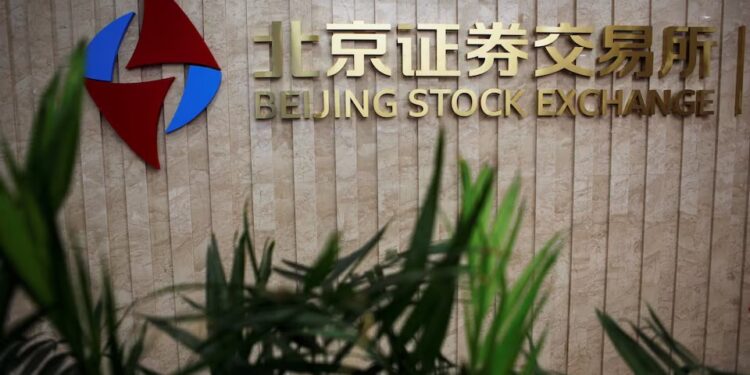China pledged on Saturday to “significantly increase” debt to revive its sputtering economy but left investors guessing on the overall size of the stimulus package, a vital detail to gauge the longevity of its recent stock market rally.
Finance Minister Lan Foan told a press conference Beijing will help local governments tackle their debt problems, offer subsidies to people with low incomes, support the property market and replenish state banks’ capital, among other measures.
These are all steps investors have been urging China to take as the world’s second-largest economy loses momentum and struggles to overcome deflationary pressures and lift consumer confidence amid a sharp property market downturn.
But Lan’s omission of a dollar figure for the package is likely to prolong investors’ nervous wait for a clearer policy roadmap until the next meeting of China’s rubber-stamp legislature, which approves extra debt issuance. A date for the meeting has yet to be announced but it is expected in the coming weeks.
The press conference “was strong on determination but lacking in numerical details,” said Vasu Menon, managing director for investment strategy at OCBC in Singapore.
“The big bang fiscal stimulus that investors were hoping for to keep the stock market rally going did not come through,” said Menon, adding this may “disappoint some” in the market.
A wide range of economic data in recent months has missed forecasts, raising concerns among economists and investors that the government’s roughly 5% growth target this year was at risk and that a longer-term structural slowdown could be in play.
Data for September, which will be released over the coming week, is expected to show further weakness, but officials have expressed “full confidence” that the 2024 target will be met.
New fiscal stimulus has been the subject of intense speculation in global financial markets after a September meeting of the Communist Party’s top leaders, the Politburo, signalled an increased sense of urgency about the economy.
hinese stocks reached two-year highs, spiking 25% within days since that meeting, before retreating as nerves set in given the absence of further policy details from officials. Global commodity markets from iron ore to industrial metals and oil have also been volatile on hopes stimulus will stoke sluggish Chinese demand.
Reuters reported last month that China plans to issue special sovereign bonds worth about 2 trillion yuan ($284.43 billion) this year as part of fresh fiscal stimulus.
Half of that would be used to help local governments tackle their debt problems, while the other half will subsidise purchases of home appliances and other goods as well as finance a monthly allowance of about 800 yuan, or $114, per child to all households with two or more children.
Separately, Bloomberg News reported that China is also considering injecting up to 1 trillion yuan of capital into its biggest state banks, though analysts say more lending firepower will come up against stubbornly weak credit demand.
STIMULUS STEP-UP
The central bank in late September announced the most aggressive monetary support measures since the COVID-19 pandemic, including interest rate cuts, a 1 trillion yuan liquidity injection and other steps to support the property and stock markets.
While the measures have lifted market sentiment, analysts say Beijing also needs to firmly address more deeply-rooted structural issues such as boosting consumption and reducing its reliance on debt-fuelled infrastructure investment.
Most of China’s fiscal stimulus still goes into investment, but this leads to debt outpacing economic growth as returns are dwindling.
The International Monetary Fund estimates central government debt at 24% of economic output. But the fund calculates overall public debt, including that of local governments, at about $16 trillion, or 116% of GDP.
“There is still relatively big room for China to issue debt and increase the fiscal deficit,” said Lan.
He added local governments still have a combined 2.3 trillion yuan to spend in the last three months of this year, including debt quotas and unused funds. Municipalities will be allowed to repurchase unused land from property developers, he said.
Low wages, high youth unemployment and a feeble social safety net mean China’s household spending is less than 40% of annual economic output, some 20 percentage points below the global average. Investment, by comparison, is 20 points above.
Chinese officials have repeatedly pledged over the past decade to increase efforts to boost domestic demand but made little progress on that front, which would require a fundamental structural re-think of many policies and institutions.
Lan said more reforms will be announced “step-by-step.”
“The focus seems to be around funding the fiscal gap and solving local government debt risks,” Huang Xuefeng, credit research director at Shanghai Anfang Private Fund Co, said of the press briefing.
“Without arrangements targeting demand and investment, it’s hard to ease deflationary pressure.”
Source: Reuters



Recent Comments